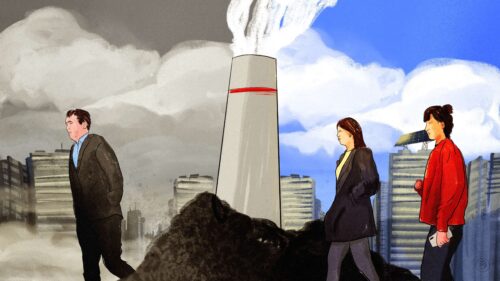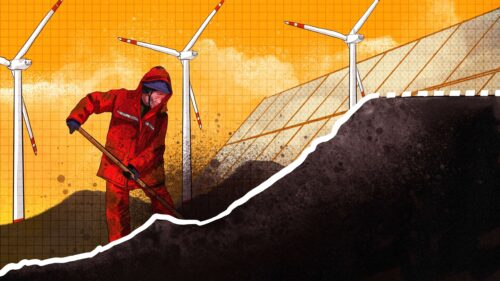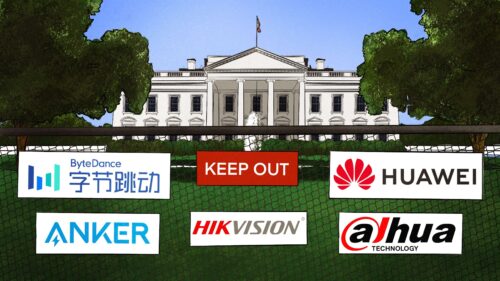Longi to build the world largest solar manufacturing base
Longi is a giant of the solar energy industry, and it has just announced ambitious plans to construct an enormous new plant in Shaanxi Province.

Longi 隆基绿能 is one of the world’s largest manufacturers of solar panels (including silicon wafers and cells) with a market capitalization of over $50 billion. Chinese investors call it the “Moutai of the photovoltaic industry,” and it has a reputation as a “white horse stock” (白马股 báimǎ gǔ), which means its generates high returns over the long term.
Longi was number one in 2020 and 2021 in the global solar energy module shipment rankings by the Taiwanese renewables and technology consulting firm InfoLink. In 2021 — when seven of the top ten companies in the ranking were from China, and seventh placed Canadian Solar is headquartered in Ontario but has a large manufacturing base in China — Longi shipped modules of 38.52 GW (of which 37.24 GW were sold outside China), a year-on-year increase of 55.45%, and 10 gigawatts (GW) more than the next-placed Trina Solar 天合光能 and JA Solar 晶澳太阳能. In the ranking for the first half of 2022, Longi slipped to third place behind Jinko Solar 晶科能源 and Trina Solar 天合光能.
China news, weekly.
Sign up for The China Project’s weekly newsletter, our free roundup of the most important China stories.
The world’s largest solar plant
On Tuesday, Longi announced an investment of 45.2 billion yuan ($6.7 billion) to build the world’s largest solar manufacturing base at the Xixian New Area industrial zone just to the west of Xi’an, Shaanxi Province, located close to the company’s headquarters.
The new facility will indeed be massive:
- Annual production of 100 GW of silicon wafers (which are constituted to form the cells) and 50 GW of solar cells.
- According to Longi, in 2022, the company attained annual production of 150 GW of silicon wafers, 60 GW of cells, and 85 GW of modules. Hence, when the new facility enters production in 2024 and reaches full production in 2025 it will effectively expand Longi’s production capacity of wafers by about 67% and cells by about 80%.
- The manufacturing base is expected to create 15,000 new jobs.
In 2022, Longi invested no less than 82 billion yuan ($12.11 billion) in production capacity expansions, and in just the last month, Longi has announced new expansion projects including 100 GW of silicon wafers, 79 GW of cells, and 15 GW of components.
Longi’s growth seems unstoppable
Here’s rundown of some of the other major recent news stories related to Longi:
- On January 3, Longi established a new PV components and equipment manufacturing company with registered capital of 200 million yuan ($29.54 million).
- On January 3, Longi announced that it had received approval from the China Securities Regulatory Commission to issue Global Depository Receipts (GDRs) on the SIX Swiss Exchange.
- On December 22, Longi announced it had achieved a new world record for the efficiency of silicon solar cells with a 26.56% efficiency rating for a heterojunction (HJT) solar cell.
- On November 2, Longi launched its new Hi-MO 6 PV module for the distributed generation (DG) and rooftop market. The module uses Hybrid Passivated Back Contact (HPBC) cell technology, which according to Longi has a maximum efficiency of 22.8%.
- In October 2022, Longi reported revenue for the first three quarters of the year of 87.03 billion yuan ($12.85 billion), a year-on-year increase of 54.85%, and net profit of 10.97 billion yuan ($1.62 billion), a year-on-year increase of 45.26%.
What could stop Longi’s rise?
Longi does face one risk factor in its international expansion: the possibility of sanctions. Last year, U.S. lawmakers questioned why Longi, along with JinkoSolar and Xinte Energy 新特能源 were left off a list of companies sanctioned for using forced Uyghur labor.
Longi and Xinte both pledged to ensure that no forced labor is used in their supply chains, but given the political climate in Washington, this may not amount to much.






